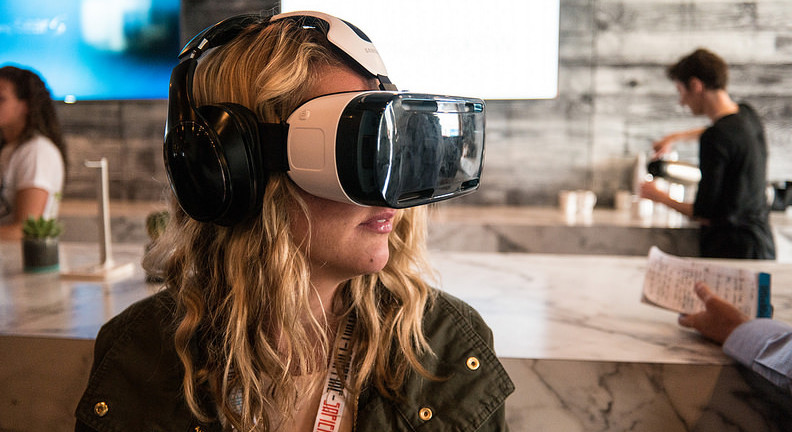M+E Connections

Technicolor Exec: VR Still Has ‘Long Way to Go,’ But Strides Being Made Quickly
Story Highlights
The virtual reality (VR) market still faces challenges, but major strides are being made at a rapid pace, according to Marcie Jastrow, SVP of immersive media at Technicolor and head of the Technicolor Experience Center in Los Angeles.
“Technicolor doesn’t think any one company is going to build the ecosystem” for VR, she said July 25 during the Virtual Reality Games & Entertainment Extravaganza online conference. “I think it’s just a process in which everybody comes together” and uses their specific expertise “to help build that ecosystem and to also look at the technology that surrounds it,” she said.
“There’s still a long way to go,” but the industry has moved quickly to improve the VR experience, she said. For example, she said, the video fidelity of a VR experience created three months ago was “10 times better” than that of one created only two years ago.
But one major “issue” with VR and augmented reality (AR) is that “people don’t have these headsets and they have no way to get socialized” in VR yet, she said. “One of the reasons why” the Technicolor Experience Center showroom, featuring a wide range of VR experiences, was built was “so that we can start socializing people who were embarrassed to get into a headset or didn’t know how to use the game controllers,” she said, adding: “My whole plight has been about education and socializing VR.”
They can get six people at a time each day at the showroom, and it’s an opportunity for those people to get excited about VR and have their “aha moment” with it, she said.
“Right now, VR is about finding that aha moment: What is going to get someone excited about having to put on a headset, deal with hand controllers and kind of look goofy in this headset,” she said. Technicolor has been getting feedback from the showroom for several months now and has been able to find out what works and what doesn’t, she said.
More support from movie studios telling stories using VR will help increase interest in the technology, she also said.
Snapchat, meanwhile, is “the true first innovator of AR,” she said, adding: “You’ve got millions of kids playing with objects” in social media as a result.
AR is already a disrupting force in the industry and she predicted it’s “going to be the disruptor” in the future also. While VR is an “entertainment mecca and a really cool way to be immersed into worlds and stories,” she predicted that AR is “going to be the next computing platform” and that whatever is in the smartphones we are using today will end up in some sort of Google Glass-type products using AR in the future. Those products will presumably be more successful than Google Glass itself was.
“We’re looking at 18 to 24 months of really getting the VR headsets pushed out” into the market from companies including Facebook/Oculus and Sony, Jastrow said. But she predicted: “I think that right as people start getting used to being in VR, they’re going to start looking at AR and they’re not going to feel so strange in putting on a pair of glasses or another sort of head-mounted display” that uses mixed reality by that point.









